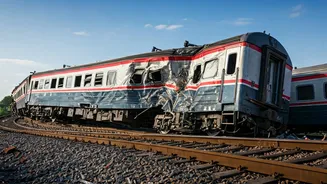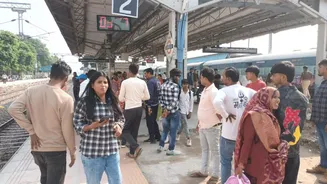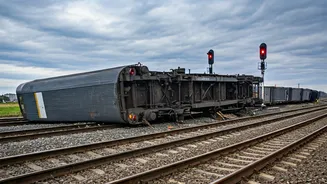Crash Overview and Impact
The train accident in Bilaspur has deeply affected the local community. The preliminary investigations suggest that the crew's inability to control the train when
approaching a danger signal was a key factor in the tragedy. This failure resulted in a crash, leading to the heartbreaking loss of 11 lives. The incident highlighted the urgent need for a thorough investigation to determine the exact sequence of events, identify any systemic failures, and prevent similar incidents from happening in the future. The aftermath has left a significant impact on the affected families and the broader community, bringing grief and a collective need for accountability.
Investigative Focus Areas
The initial report highlighted several areas of critical concern. The primary focus of the investigation revolves around the crew's actions leading up to the crash, especially their response to the danger signal. Authorities are meticulously examining the train's speed, braking systems, and the communication protocols that were in place at the time. Further scrutiny is being directed towards maintenance records and any potential mechanical failures that may have contributed to the accident. Investigators are looking to uncover if there were any pre-existing issues or if proper procedures were followed. The probe aims to fully reconstruct the events, identify all contributing factors, and prevent similar incidents in the future. This will involve careful examination of available evidence.
Crew Actions Examined
The actions of the train crew are receiving close scrutiny. The investigation is trying to determine if the crew adhered to standard operating procedures and properly responded to the danger signal. There will be careful analysis of their training, experience, and any potential human factors that might have been involved. Investigators are also looking into the possibility of fatigue, distraction, or any other issues that might have compromised the crew's performance. The review seeks to assess the crew's effectiveness in managing the train and responding to the immediate threats. Every aspect of their conduct, communication, and decision-making will be critically reviewed to get a full picture of what happened.
Signal and Systems Analysis
An essential element of the investigation involves analyzing the train's signaling system and related safety mechanisms. The investigators are checking if the signal was functioning correctly and if the crew received appropriate warnings. This investigation is delving deep into how the signaling system functioned and whether there were any glitches or miscommunications. Furthermore, investigators are examining the train's speed control systems and braking mechanisms to assess whether they performed as designed. A thorough inspection of the train's black box data is being conducted to understand the conditions leading up to the crash. This process also incorporates an audit of the maintenance records to confirm that all required inspections were performed.
Immediate Aftermath Response
Following the tragedy, immediate relief efforts were initiated. First responders quickly arrived to provide aid. The priority was the rescue of the survivors and the care for the injured. Medical teams offered necessary support and the injured were taken to nearby medical facilities. Additionally, the authorities worked to identify the deceased and to support the families. Investigation teams were swiftly deployed to begin gathering evidence and examining the scene. The government has pledged to fully support the families affected and has ordered a thorough investigation to determine the exact cause of the accident. These initial responses are critical in providing immediate help and starting the process for long-term recovery.
Future Preventative Measures
The investigation's findings will be crucial for developing preventative measures to avert similar accidents in the future. These measures will encompass enhancing safety protocols, improving crew training programs, and upgrading infrastructure. Authorities are expected to review and reinforce emergency response protocols, guaranteeing faster and more efficient responses to any incidents. The aim is to enhance the existing systems, incorporate modern technologies, and bolster the safety standards on Indian railways. Further, efforts will be made to boost public awareness campaigns, educating commuters about safety measures. All of these combined efforts aim to provide a safer transportation environment, minimizing the chances of future tragedies. This will involve significant investment and continuous monitoring.
















